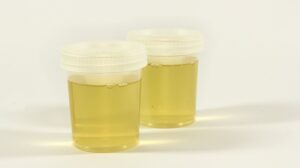
Markethealthbeauty.com | Wood’s Lamp Examination – Wood’s lamp is a tool used to detect problems on the skin. Read on for an explanation of who needs to do this procedure to the rules for using it.
What’s Wood’s Lamp Test?
Wood’s lamp is a device that emits purple UV light. These rays can help medical professionals diagnose conditions that affect the skin and hair, including fungal infections, bacteria, head lice, and patchy pigmentation.
Normal, healthy skin will not glow under the light. But if there is a skin problem caused by bacteria and fungi, the skin produces a lighter color.
Wood’s Lamp Examination Required Conditions
The following are conditions that can be diagnosed with this method and how it looks under those lights.
1. Bacterial infection
Bacterial infections will appear in bright green light under Wood’s light, especially Pseudomonas infections. These infections tend to affect people who are hospitalized or have burned, and can cause a dangerous complication called sepsis.
2. Erythrasma
Erythrasma is a skin infection caused by bacteria called Corynebacterium minutissimum. The disease will appear in coral pink color under Wood’s lamp.
3. Head lice
Head lice eggs appear in white light under Wood’s lamp examination. Meanwhile, nits that are empty and hatched appear in gray color.
4. Uneven pigment
Wood’s lamp test can detect an uneven amount of pigmentation. Pigment deficiency appears in a bright whitish blue light under Wood’s lamp. While excessive pigment looks darker with a very clear outline.
5. Pityrosporum folliculitis
This condition is a fungal infection that affects the hair follicles. This fungus can be found on the chest and upper back of the patient. This fungus is a bit difficult to detect because it is very similar to acne. The color that appears under Wood’s lamp is yellowish green.
6. Porphyria
It is a group of rare diseases that affect a patient’s skin and nervous system. A person who has this condition is very sensitive to sunlight and it can cause burns. Porphyria will usually appear in a reddish-pink color when doing wood’s lamp test.
5. Ringworm
A common yeast infection causes round red patches that are itchy. Ringworm will emit a blue-green color during this test.
Read more:
How to cure a yeast infection?
6. Vitiligo
Vitiligo is caused by a disruption in the cells that produce melanin. This condition causes the loss of skin color in the form of patches.
Vitiligo will appear with a sharp outline under the spotlight of Wood’s light and appear in bright blue-white or yellow-green.
Other Important Things About Wood’s Lamp
The Wood’s lamp examination is a non-invasive test that is fast, safe, and painless.
Who does the test?
This examination is usually performed by a dermatologist. Meanwhile, beauticians can also use this test to check for signs of aging on the skin, such as uneven skin tone, wrinkles, and dark spots; before starting any cosmetic treatment.
Even so, beauticians are not medical professionals so they cannot formally diagnose medical conditions, even if the patient has the condition.
Preparation before the test
The patient’s skin should be clean and dry prior to the examination. Patients are forbidden to apply perfume, makeup, lotion, or other skin care products.
Use of these products is likely to appear under Wood’s lamp and may affect the test results.
During the test
Wood’s lamp inspection should be carried out in a completely dark room. First, the doctor will turn on the light and leave it on for about a minute.
The lamp will be held at a distance of 10-13 cm from the hair. The examination is carried out in several areas for a few seconds. During the examination, the patient will be asked to wear glasses or goggle specifically to prevent corneal damage due to exposure to light.




